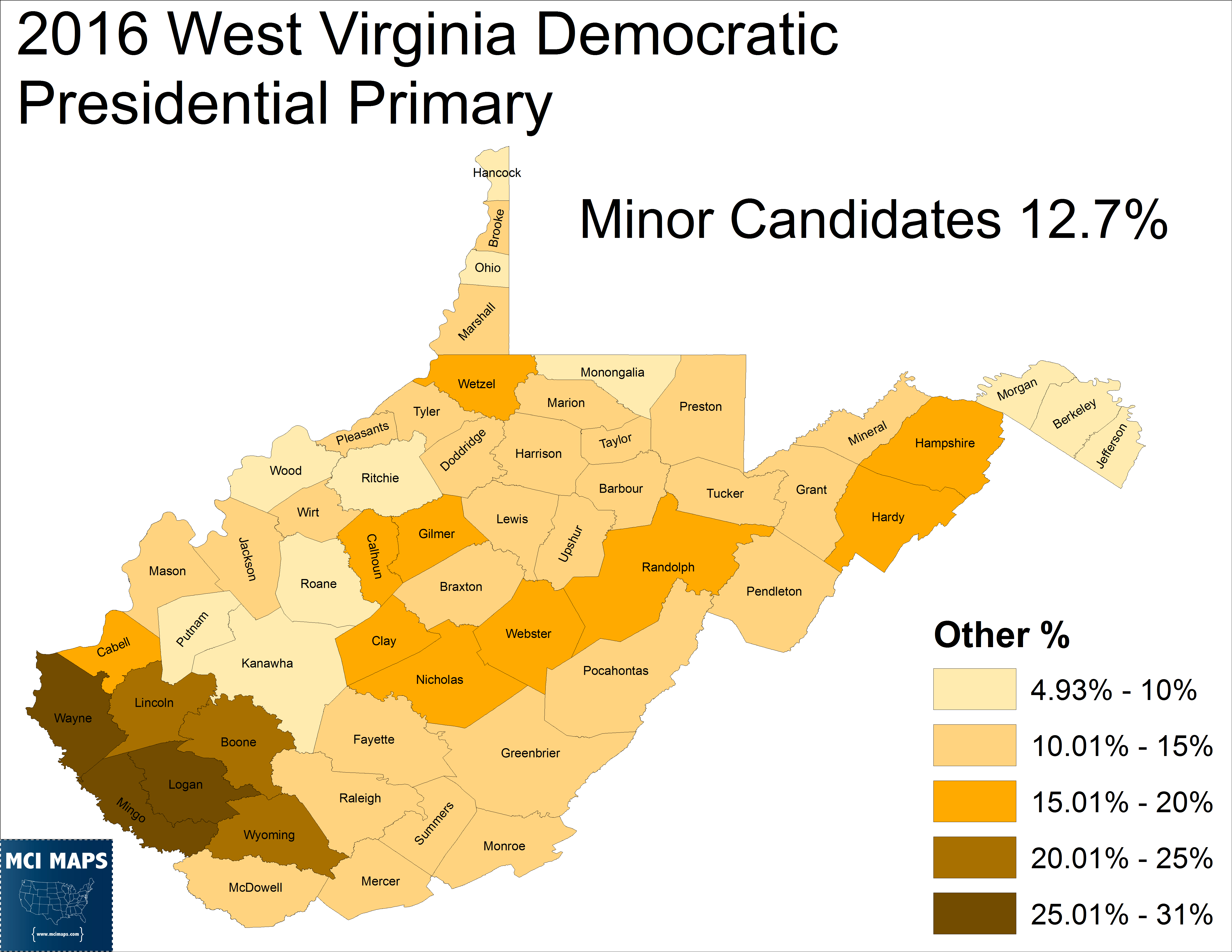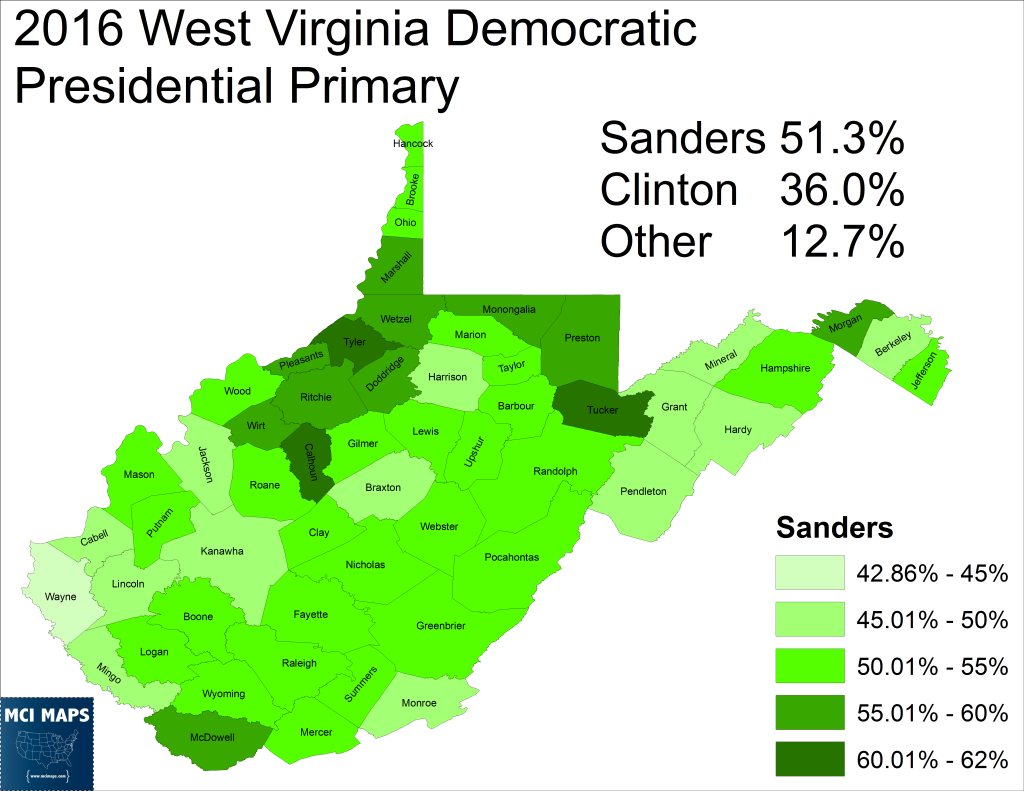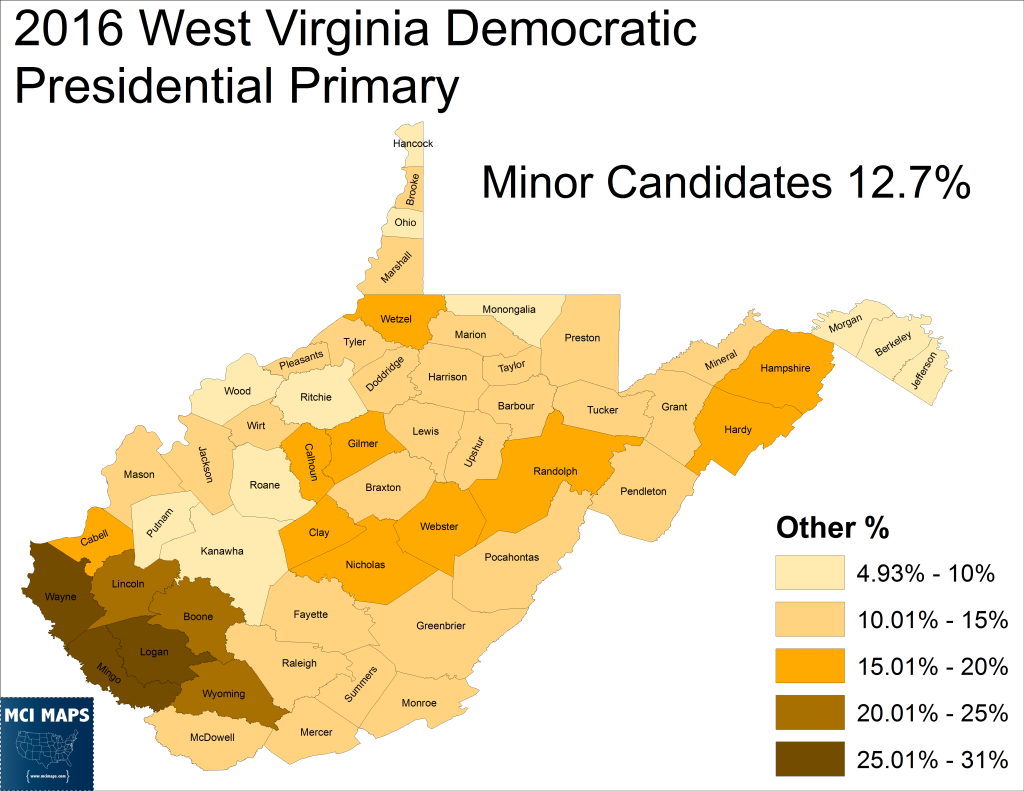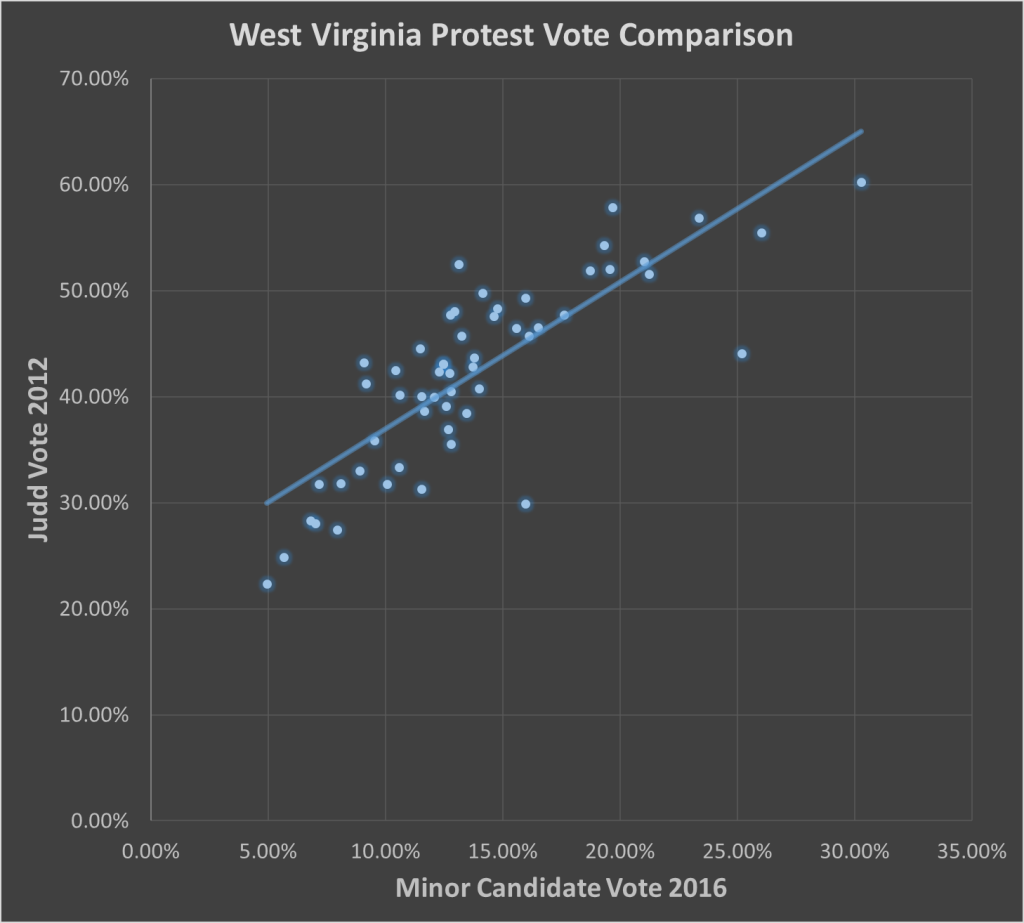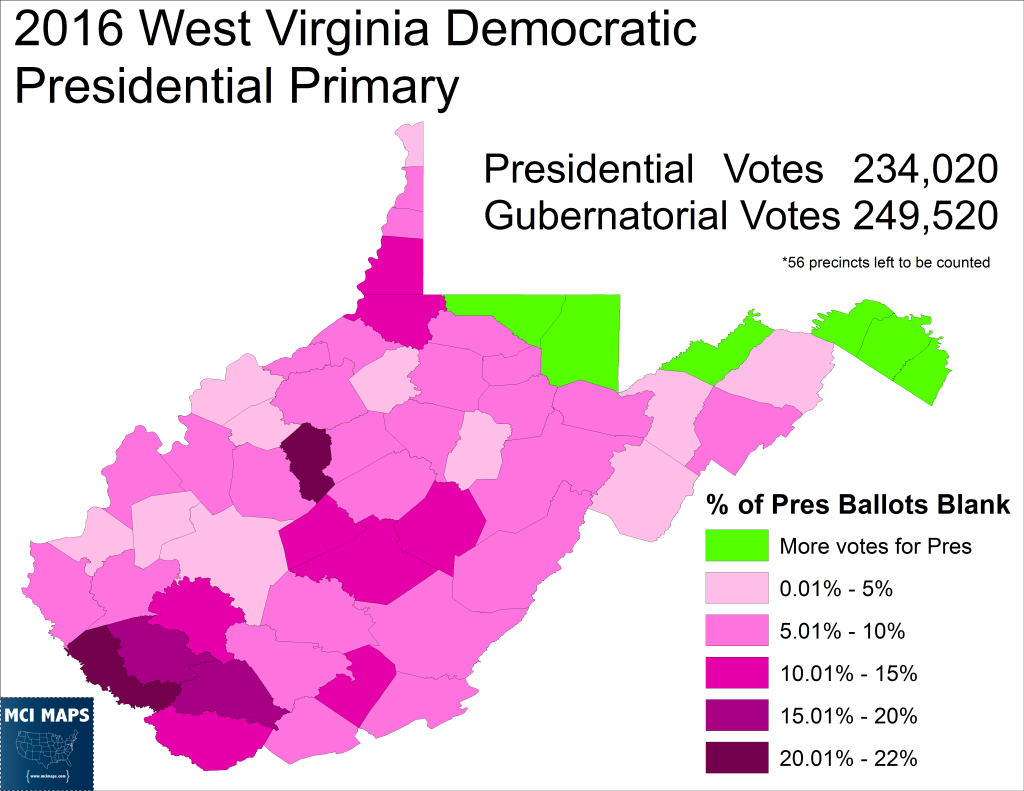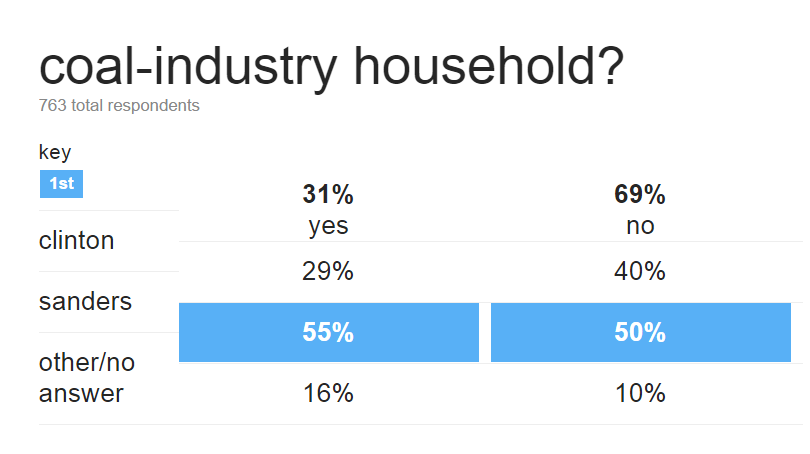The day of the West Virginia primary, I posted this article predicting an especially large number of ballots to be cast for candidates other than Bernie Sanders or Hillary Clinton. Overall I expected Sanders to win by double digits due to demographics, but that the main story would be how many voters rejected both candidates. When the results came in, we did indeed see the largest share of the vote for non-Clinton or Sanders so far, 12.7%.
Sanders won every county in the state, getting a decent 15 point win. However, even with that win, he was still only at 51% thanks to the large share of vote combining for the many minor candidates on the ballot. The minor candidate vote was highest in major coal counties in the state.
The minor candidate vote correlates well with the vote for Keith Judd, the imprisoned man who got 40% against Obama in the 2012 primary. Judd was a protest vote just like this year’s combination of minor party candidates.
In addition to the votes for minor party candidates, there was another form of protesting in the form of leaving the ballot blank. West Virginia had a Gubernatorial Primary that same day. Jim Justice, a coal man, won the primary easily with his best showing coal country.
As of current counting around 4am, around 15,000 few voters were cast for President than for Governor. That equates to 6.2% of the ballots being blank for President. The biggest share of blank votes were, unsurprisingly. in major coal counties.
Compare the maps of Justice, the blank votes, and the minor candidate vote, and Justice is shown to have some of his strongest showings in regions that didn’t like Clinton or Sanders. Justice is a coal man, and neither Clinton or Sanders are seen as friendly to the industry.
So how did Sanders, a self-described socialist who was chair of the Senate Subcommittee on Green Jobs, win West Virginia by such a strong margin? As I stated in my preview article, Demographics were good for Sanders here. However, the exit polls show another reason for his vote share, a protest vote from the right.
When the exit polls are done, they traditionally ask if the voter wants the Democratic nominee to keep in line with Obama’s policies, go more liberal, or less liberal. Less liberal normally gets such a small response rate that it can’t be broken down by candidate preference. However, this time a whopping 41% of the Democratic primary wanted the next president to be less liberal, and those folks heavily backed Sanders.
Sanders of also won those who wanted a more liberal president while Clinton won those who wanted a President to continue the Obama administration’s policies. However, continuing Obama’s policies had the smallest share in the primary.
The coal-minded voters, those with people in the industry in their household, also backed Sanders by a larger margin than those without.
Notice in the coal household and the less liberal categories how large the share for other/no answer is. That is where much of the minor candidate vote was coming from. Clinton is running as a 3rd term of Obama and often wins those who want to continue his policies, according to the exits. However, conservative Democrats, of which there are many in West Virginia, despise Obama and by association despise Clinton. Clinton dominated the primary in 2008. Unfortunately there were no exit polls, but I would venture some of that vote was a right-wing protest against Obama. This time the role was reversed.
The exit asking about the planned vote for November also revealed just how conservative this primary vote was. When paring Clinton or Sanders against Trump for the fall, over 30% planned to vote Trump regardless.
Keep in mind this is of Democratic primary voters, and Trump is getting over 30% no matter what. What again is notable is how poorly Clinton does with those planning to vote Trump, under 20% with a large refused-to-answer share. Sanders wins the Trump voters by a large margin over Clinton, further proving that many of his backers have no plan to vote Democratic in the fall. Indeed the MSNBC exit poll broke things down further and found that over 30% of people voting for Sanders in the primary would back Trump in the fall EVEN IF Sanders was the Democratic nominee.
Clinton’s poor reputation with coal country resulted in conservative Democrats either voting for minor candidates, leaving their ballot blank, or voting for Sanders to stick it to Clinton. Clinton even lose to minor candidates combined in two coal counties, and only beating out that protest vote by unimpressive margins in many others.
The West Virginia primary was liable to be an interesting night due to the likely high protest vote, fueled by a semi-closed primary and a large swath of conservative Democrats. The state did not disappoint. Sanders can take solace in his victory. However, it was not fueled by the progressive revolution he is campaigning on. His win actually mirrors a similar scenario in 2014 when a liberal Gubernatorial candidate did well in conservative North Florida as a protest vote. Do not be surprised if these trends mirror themselves in the major coal counties in Kentucky next week.

